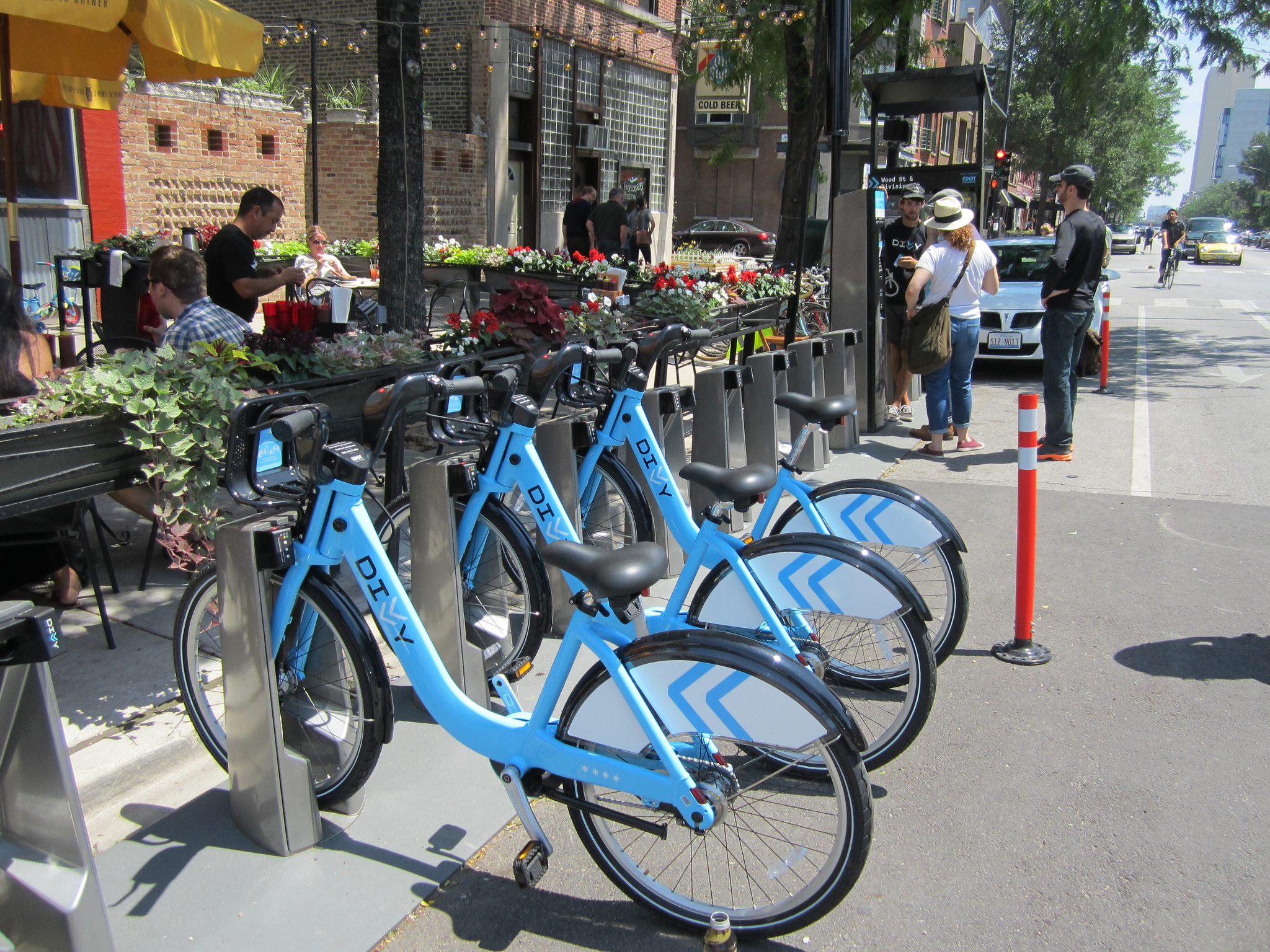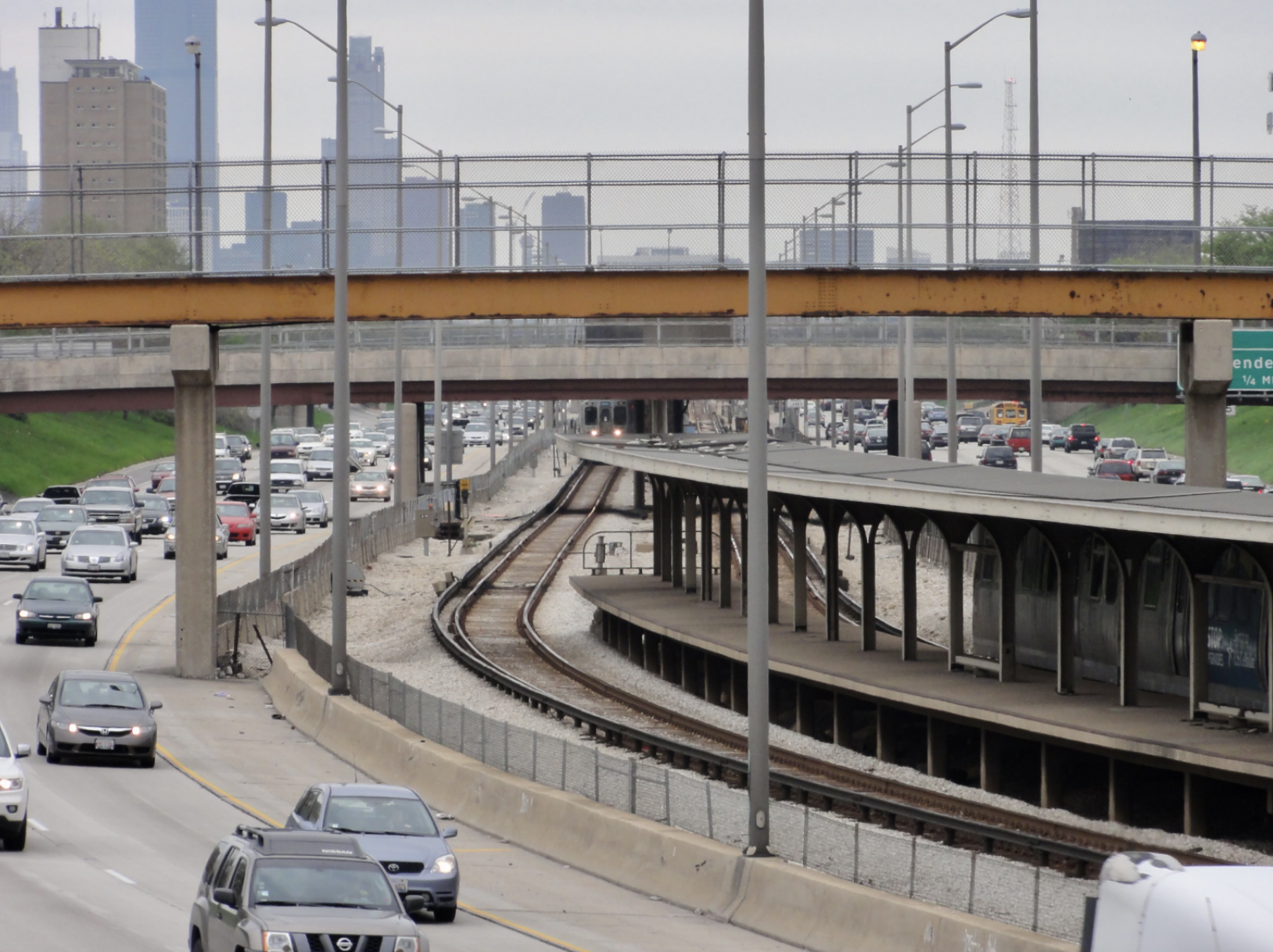Editors note: Local bike advocate Julie Sherman, who has been active with the Chicago Cycling Club, as well as a major booster of Streeetsblog Chicago, offered to share her experiences with Divvy and personal safety issues.
I have an annual Divvy bike-share membership and have had one for several years. I like the flexibility of being able to usually find and grab a bike as I make my way from point A to B, and then point F to G, without worrying that my own bike is sitting out vulnerable to the elements, vandalism, and theft.
The idea that Divvy could transport me more swiftly and safely at night than walking was another primary motivation for me to buy the membership each year. When I leave a restaurant, event, or the gym in the evening, hop on to a Divvy, and cycle home, I feel less vulnerable to street crime than I would if I was on foot.
However, as a recent post on the Chicago Bike Report pointed out, Divvy’s popularity has led to some distribution issues. The author noted that, during the p.m. rush, many downtown stations are soon empty of bikes.
Similarly, although there are several Divvy stations within a mile of my house in West Town, I have found that over the last month or so, now that it’s getting warmer and more people are riding, if I return home after 7 p.m. there are usually no open docks at my nearby stations. Even more frustrating is that Divvy has become unresponsive to requests from myself and other users I know to be more proactive about “rebalancing” – relocating cycles from full stations to empty ones – at the several stations along Damen in West Town, which fill up quickly during the evening commute.
On one occasion I spoke with a Divvy employee who was removing some bikes from the Damen/Pierce station (just south of the Damen Blue Line stop) and loading them into his nearly empty van. Since he was going to be passing four completely full stations south of that location on Damen on his way back to headquarters, I asked if he could remove some bikes at the Damen/Chicago station, closest to my home. He apologized, but said he couldn’t do this unless he was “authorized” to do so. If Divvy drivers really aren’t allowed to make decisions on the fly about removing or adding bikes at full or empty stations, that seems like a bad policy.
As it stands, if I’m coming home from the east side of town after 7, it’s generally the case that my only option is to pedal almost a mile past my house to a less popular station in a secluded industrial area. As a petite, slow-moving woman, I find walking back from this isolated location by myself after dark to be a nerve-wracking experience. It no longer feels safe for me to ride Divvy home at night.
I realize that many parts of Chicago don’t yet have Divvy, and some neighborhoods that do have stations don’t as much station density as West Town, so having a few full stations within walking distance of my home is a good problem to have. Still, it would be great if Divvy would recognize the popularity of these stations and do a better job with rebalancing them and/or add some more docks to create additional capacity. My hope is that Divvy will address its popularity issue so that users can dock closer to their destination and not have to ride around in hopes of finding an empty dock within striking distance of their destination, or walk there alone from a remote location.
This post is made possible by a grant from the Illinois Bicycle Lawyers at Keating Law Offices, P.C., a Chicago, Illinois law firm committed to representing pedestrians and cyclists. The content is Streetsblog Chicago's own, and Keating Law Offices neither endorses the content nor exercises any editorial control.



